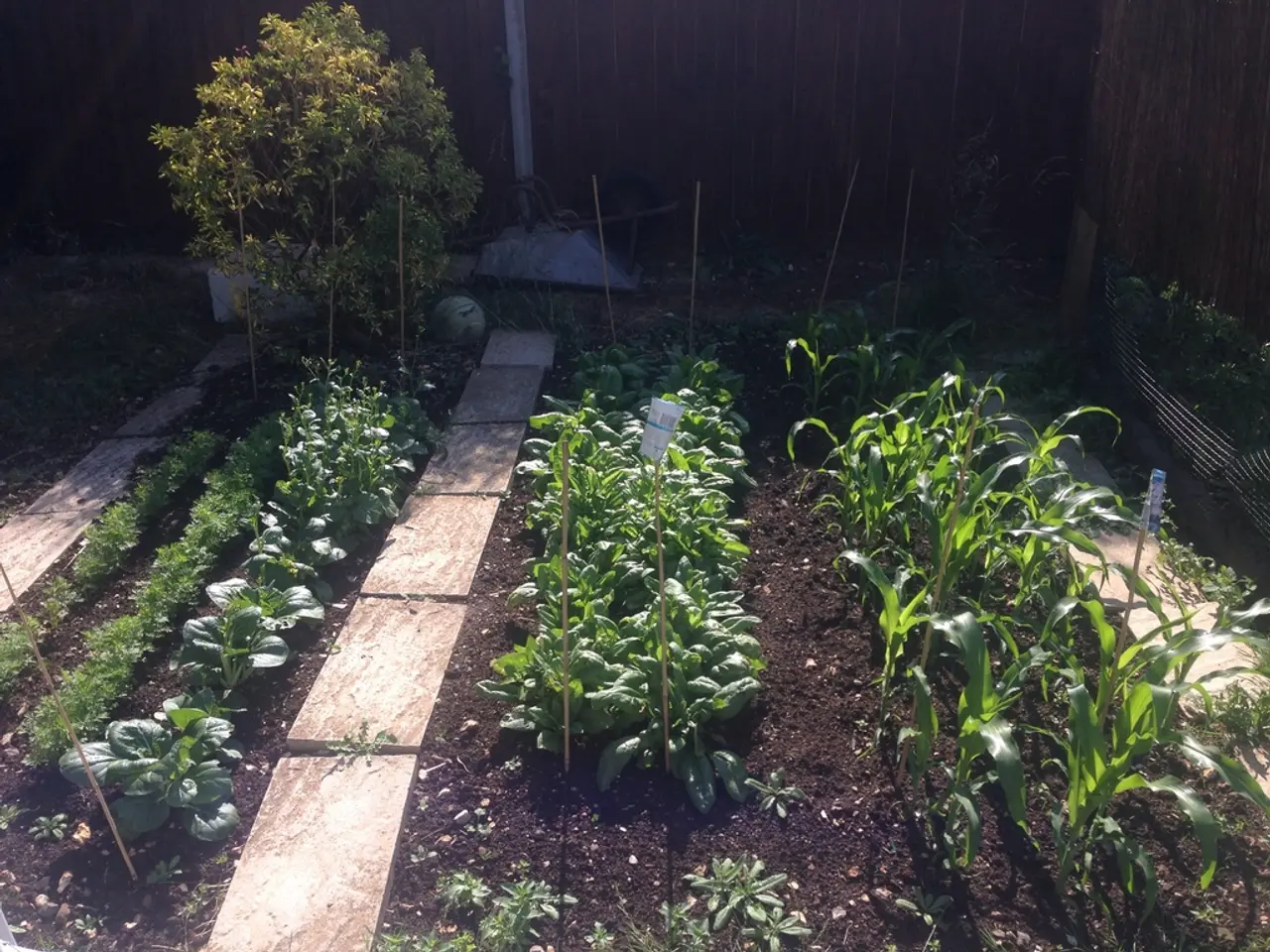Comprehensive Handbook on Cultivating Pea Plants
Tucking into the delightful pods of sugar snap peas while digging around in the garden during spring never fails to bring a smile to our faces. As one of the first crops to hit the ground as soon as the soil can be worked, they're usually bulging with their sweet, tender deliciousness by the time we're planting our late spring crops. Growing your own peas is as easy as pie, so let's dive in and discover the process.
Types & Varieties of Peas for the Garden
Faced with a multitude of options, it can be tough to decide which type of pea to grow. Luckily, there are only three main types you need to be aware of: English (shelling) peas, snow peas, and snap peas. Each has its own unique characteristics and benefits, so choose wisely (or go wild and grow them all!).
English (Shelling) Peas
These babies don't have edible pods; they're the ones we tastefully pluck to make delightful, plump peas for soups, stews, and stashing away for winter use. English peas boast quick growth and offer bush varieties that can be harvested in about 50 days and trellis-type varieties that are usually ready in 60 to 65 days. Ideal growing conditions for English peas include USDA zones 2 through 9, a sunny location, and nice, loamy soil. Someone who frequently struggles with warmer weather may find that the variety ‘Lincoln' suits them better than others. For a bush pea that grows well in compact spaces, try 'Tom Thumb'.
Snow Peas
Snow peas offer flat, edible pods that are often found in stir fries. They're a bit trickier when it comes to maturity, sometimes taking 65 days to reach maturity. However, harvests can start when pods are only a few inches long, as we’re not allowing the peas to get fat like we do with other varieties. Snow peas also prefer a bit of drier soil and can be grown in USDA zones 2 through 9. Some popular varieties include 'Oregon Giant' and 'Oregon Sugar Pod II'.
Snap Peas (a.k.a. Sugar Snap Peas)
These are a hybrid of snow peas and English peas, featuring edible pods that are allowed to fatten up slightly but not completely. Snap peas take approximately the same amount of time as the other two types to mature, but they usually last a bit longer when the weather warms up than their snow and English counterparts. These can be grown in USDA zones 3 through 9 and thrive in full or partial sun with well-drained, loamy soil. Just like snow peas, snap peas also prefer a bit of dryness. With a multitude of delicious varieties available, you can find something to suit your taste and garden space. Some excellent choices include 'Sugar Snap', ‘Sugar Magnolia Tendril Pea' with its striking purple pods, and ‘Sugar Bon’, a compact, dwarf variety ideal for smaller spaces.
Growing your Sweet Peas from Seed to Harvest
When to Plant your Pea Seeds
Your pea seeds should ideally be sown as soon as the ground is workable, even if there's snow in the forecast. Generally, this falls about 4 to 6 weeks before your last expected frost. Consult this map to find out your zone and the appropriate date. If the ground is still frozen 4 to 6 weeks before the last frost date, start your seeds indoors.
Preparing your Garden for Planting Peas
Find a sunny location for your peas; the more sun, the sweeter your peas will taste, and the more peas you'll have. If you have the opportunity, prepare your site the previous fall by adding several inches of compost to the area you plan to plant. Your peas will thrive in well-draining soil that isn't rich in nitrogen. Instead, work in some bone meal and wood ash to encourage heftier yields.
How to Plant Peas
Soak your peas overnight in water before planting to encourage faster germination, although it's not a must. Dig holes about an inch to two inches deep and place them about every foot or two. Drop in the seeds, cover them up, and water them well.
Caring for your Pea Plants
Once your peas have sprouted, provided some trellis support if necessary, and water sparingly if it's a particularly dry spring. Regularly remove weeds to keep production at its peak. As the weather warms, be cautious of aphids, Mexican bean beetles, wireworms, root-knot nematodes, fusarium wilt, and powdery and downy mildew. In general, peas aren't overly high-maintenance, making them perfect for busy gardeners.
Harvesting Peas
Peas will be ready to harvest in about two months. For the best flavor and texture, pick yours in the morning after the dew has dried. Consistent harvests will promote continued growth, so start checking for ripe pods as soon as you see flowers.
Remember, patience is key when it comes to certain varieties—let the peas reach the appropriate stage before indulging! And there you have it—now you're fully equipped with all the information you need to reap the benefits of your very own pea patch!
- Considering the various options, growing sugar snap peas, which have edible pods, is a great choice for a home-and-garden lifestyle, as they offer delightful snacks and can be incorporated into a variety of dishes.
- In addition to English (shelling) peas and snow peas, those who wish to diversify their home-and-garden endeavors might consider growing snap peas, a hybrid variety characterized by their plump, edible pods, which are typically ready for harvest around the same time as the other types and thrive in similar growth conditions.








